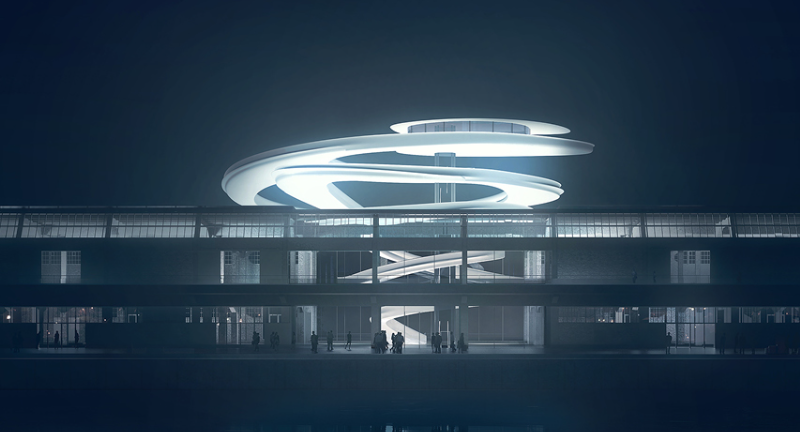A New Life for an Industrial Icon
Rotterdam, a city known for its innovative spirit and architectural marvels, has recently witnessed the transformation of a historic landmark. The Fenix Factory, once a bustling hub of industry, has been reimagined by the renowned Chinese architectural firm Mad Architects. The result is a stunning blend of contemporary design and industrial heritage that has breathed new life into the city’s waterfront.
A Brief History of the Fenix Factory
The Fenix Factory was constructed in 1923 as a warehouse for the Royal Dutch Steam Navigation Company. For decades, it served as a vital part of Rotterdam’s maritime trade. However, as the city’s economy shifted, the factory fell into disuse and eventually became a symbol of urban decay.
Mad Architects’ Vision
In 2014, Mad Architects won a competition to redevelop the Fenix Factory. The firm’s vision was to create a sustainable, mixed-use development that would revitalize the waterfront and become a cultural destination. The architects sought to preserve the factory’s industrial character while incorporating modern design elements to create a unique and inviting space.
Key Features of the Fenix Factory
The Fenix Factory now houses a variety of functions, including:
- Cultural Center: A multi-purpose venue for exhibitions, performances, and events.
- Hotel: A boutique hotel offering luxurious accommodations and stunning views of the river.
- Restaurants and Cafés: A variety of dining options catering to different tastes and budgets.
- Retail Spaces: Shops selling a range of products, from fashion to home goods.
One of the most striking features of the Fenix Factory is its central courtyard. This open space is surrounded by the original factory buildings, which have been carefully restored and repurposed. The courtyard is a popular gathering place for locals and visitors alike, offering a tranquil oasis in the heart of the city.
A Sustainable Future
Mad Architects’ redevelopment of the Fenix Factory is a testament to the firm’s commitment to sustainable design. The project incorporates a number of eco-friendly features, including:
- Energy-efficient lighting and heating systems
- Green roofs and gardens
- Water conservation measures
- Use of sustainable materials
By prioritizing sustainability, Mad Architects has ensured that the Fenix Factory will be a model for future urban development projects.

